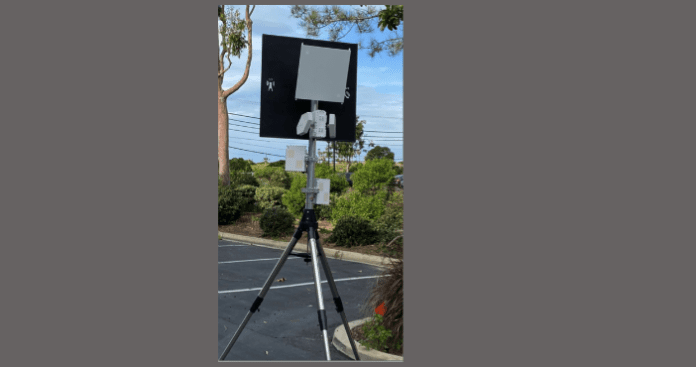It’s an exciting time for the communications industry. This year on gameday, fans will be able to experience the high speeds and low latency of 5G at the stadium in Miami. 5G has the capability to take immersive experiences to a whole new level.
The stage has been set for massive bandwidth, extreme low latency, rapid response times, and a much higher capacity for massive real-time data applications like gaming, video, virtual reality, and the like. 5G can lower latency to just a few milliseconds (almost zero) coupled with substantial bandwidth, enabling digital activity that hasn’t been seen yet.
The Super Bowl isn’t the only major sporting event to be taking advantage of all that 5G has to offer. The 2020 Summer Olympic games will also be highlighting the benefits of 5G in ways that we can only imagine. The Japan government is playing a key role in meeting network capacity, data, low-latency, and security needs by offering “Local 5G” millimeter-wave, high-frequency spectrum to enterprise customers. The result will be to replace saturated Wi-Fi networks and ease the burden of extending optical fiber for campuses, warehouses, and automated manufacturing facilities, etc. With the initial 100MHz (28.2-28.3 GHz and future 28.2-29.1 GHz) spectrum, companies can deploy, scale, and own their private network infrastructure allowing carriers to focus on consumer and emerging-edge services. Last December, new corporate tax incentives were introduced to promote and accelerate 5G deployment and all eyes are on the 2020 Olympics games where 5G will also take a center stage.
Of course, the rollout of a new 5G network is an enormous task especially in the millimeter wave high-frequency spectrum. One of the most significant obstacles wireless providers face is deploying 5G New Radios (NRs) to increase coverage, capacity, and data speed while reducing latency by rolling-out robust scalable networks at low cost to carriers, enterprise customers, and ultimately to consumers. By “bending signals” around corners while increasing signal strength to reach users, where they are, is critical. Achieving it using completely passive “smart-mirrors” with no additional wiring, power sources, or permits required is the ultimate solution. We’ve all had experiences of having to move 5 feet to keep the integrity of our phone call intact or get that final image in text sent. 5G, if deployed well, will change that. Not only will we be able to keep our peer-to-peer connections for normal wireless activity, but content providers will be able to up their game when it comes to delivering rich real-time content (imagine the video experiences we could start to encounter from content providers like the NFL, Disney, Amazon, and others).
Carriers don’t want to deploy extensive numbers of brand new, expensive-to-install-and-maintain 5GNRs, and also create consumer unease by being surrounded with dense radio installations consuming high amounts of power. Adding 5GNRs heighten these concerns as well as increase the ongoing capital costs associated with any hardware infrastructure offering digital services — such as supplying power, obtaining permits, and ongoing management. Even more difficult to solve is the fact that radios add delays at each 5GNR “hop” along the connection, slowing edge latency.
Metawave ECHO™ Passive Reflectors and TURBO™ Active Repeaters Cost Effectively Extend 5G
Metawave’s sophisticated 5G platforms provide an economical solution. Using advanced analog designs, Metawave simplifies 5G network rollouts by enriching the channels with enough signal strength to meet 5G gigabit speed while dramatically decreasing the number of expensive 5GNRs.
Offering the industry’s first purely analog solution, Metawave ECHO™ passive reflectors economically extend 5GNR deployments with passive directional panels for complex deployment scenarios. Metawave offers a variety of configurations that can easily be added to existing standards-based 5G deployments. Metawave’s TURBO™ is the industry’s first analog-only repeater that reduces deployment complexity, delay, and overall cost of ownership, both in capital and operating expense, of already complex and costly network deployments such as large stadiums and automated manufacturing facilities.
By intelligently designing and pointing Metawave’s TURBO active repeaters coupled with Metawave ECHO passive reflectors toward desired coverage areas, carriers will extensively increase signal strength to reach longer ranges, bend signals around corners and under bridges, as well as inside buildings and through windows. Metawave ECHO was demonstrated in Tokyo over a year ago, and NTT DOCOMO was able to show a significant increased data in downlink throughput, boosting speeds 10x faster compared to using just the Ericsson base station on top of a building. In recent months, Mirait conducted indoor demonstrations of Metawave ECHO, confirming the results reached the expected performance level.
Metawave’s TURBO active repeater will exceed the reach of the ECHO passive capabilities. And, when the two platforms are used together, the deployment will be even more efficient and more economical, greatly reducing the number of required 5GNRs. And, without the network hop needed at every 5GNR, the latency will fulfill the promise of 5G speeds. Metawave platforms for 5G millimeter-wave scenarios set a new bar in performance, cost, latency and reduction of network complexity.
Wireless carriers and service providers have concluded that 5G networks cannot be deployed economically without innovative low-cost analog solutions like Metawave’s TURBO and ECHO. Metawave is excited to be working with top carriers in the United States and Japan on 5G opportunities. The innovation showcased in Metawave platforms are game-changing when it comes to deploying economical 5G networks.
Please email info@metawave.co if you would like to visit Metawave at Mobile World Congress 2020 in Barcelona, Spain and want to learn more about our 5G platforms.

